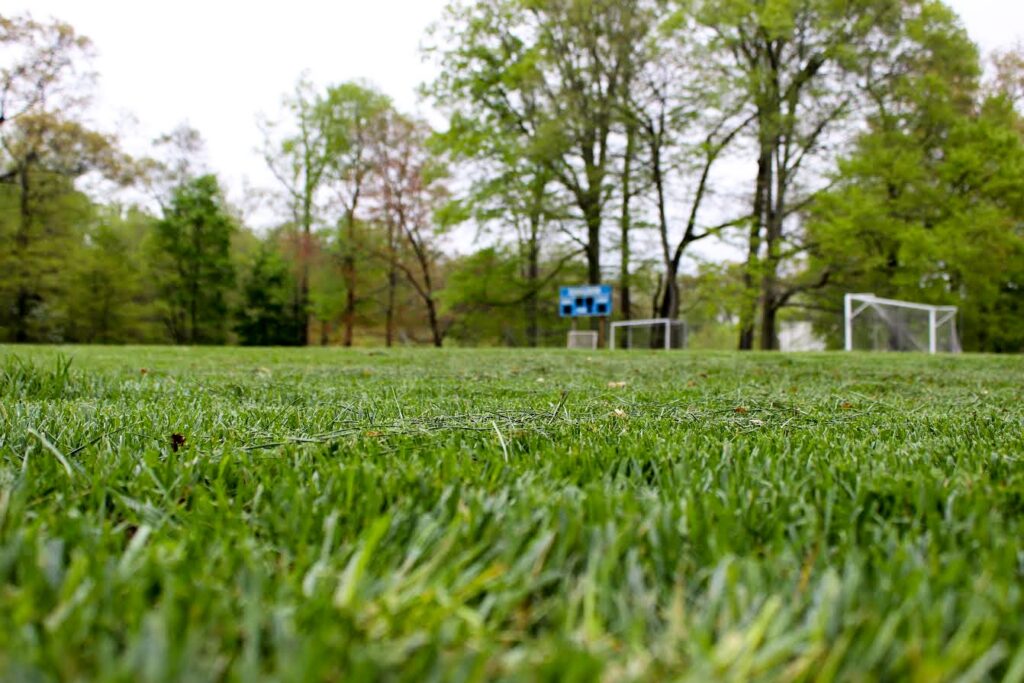Like anything, technology continues to allow the world to make advances and improvements just about anywhere. And that also includes in analyzing and improving turf. In this article we will focus on four key advances that have come along recently.
We will review NDVI sensors, robotics greens mowers, GPS guided soil nutrient mapping and Eco-friendly landscaping. Let’s get started.
NDVI Sensors
NDVI stands for normalised difference vegetation index, with the following formula; (NIR-R)/(NIR+R). It is a vegetative index that is used for computing the quality of the turf. The index ranges from 0 to 1 and is measured to 3 decimal points.
NDVI sensing can provide early detection of possible turf diseases before they show up. Sensing can be done either remotely or proximally. Remote sensing is a term defined as identifying characteristics of an object without coming into contact with the object. An optical sensor is an example of a remote sensor. Proximal sensors refer to sensors that make contact with the ground, such as a TDR moisture probe which must be inserted into the ground.
Sensors will typically measure the plant reflectance from three bands; red (R), red-edge (RE) and near infrared (NIR). Healthy turf shows low reflectance in the red band and high reflectance in the near-infrared band, with stressed turf showing the opposite; higher reflectance in the red and lower reflectance in the near infra-red.
The use of NDVI to measure turf quality is especially important for turf being utilized for sports fields, golf courses and backyard facilities.
Robotics Greens Mowers
Here we are again with technology. With the rise in popularity of robotic mowers, the days of spending a Saturday afternoon cutting the grass and following it up with a cold drink may be fading. These battery powered mowers are quiet, and once you give them the proper direction (space of yard or low voltage wire coordinates) they are off and running. Don’t worry if they run into something, they’ll just turn around and go the other direction. Although you may not have the perfect cut lines your mower provides, it will be good enough.
Robotic mowers are also becoming quite popular in the commercial world. John Shaw, from Valley Brook Country Club in Pennsylvania, used to use his crew to double cut and roll his greens on a daily basis. Now he uses six robotic greens mowers that cut and roll all in one pass, produce straight lines, fast putting conditions, crisp and clean turns, and what Shaw calls the neatest clean up pass you’ll ever see.
He even can program varying turning points so that the mowers do not repeatedly reverse direction in the exact same spot every day.
GPS Guided Soil-Nutrient Mapping
Site-specific nutrient management is a component of precision agriculture and can be used for any field or crop. It combines plant nutrient requirements at each growth stage and the soil’s ability to supply those nutrients, and applies that information to areas within a field that require different management from the field average.
The value of GPS and remote-sensing technologies comes from incorporating the data into the management decision process. These tools can help to develop a comprehensive crop and soil nutrient management plan that can help improve production efficiency, increase yields and reduce potential environmental problems associated with crop production.
Eco-Friendly Landscaping
Eco-friendly landscaping, also known as green or sustainable landscaping, is a way of creating and maintaining land in order to save as much energy as possible, while also being kind to the environment.
Traditional landscaping methods take a great deal of upkeep. Many times, the economic and environmental costs far outweigh the actual natural benefits. Sustainable landscapes are by design both in balance with their local climate, as well as being attractive. Use of non-electric and traditional gardening implements, such as handheld plants shears, is commonplace in order to avoid wasting resources and damaging delicate plants.
Here are just a few of those benefits of Eco-Friendly Landscaping
- Essential to improve energy and water efficiency.
- Can help to eliminate harmful chemicals entering the atmosphere, groundwater, and food chain.
- Green gardening is sustainable, can help clean the air, produces healthy fruit and vegetables, and helps to restore the ecosystem.
- Sustainable landscaping involves planting specific native plants that will thrive in certain soil types. These plants generally require less watering, as well as no chemical fertilizer and pesticides. This also restores native plants to their rightful areas, and creates healthy habitats for local wildlife.
- Green landscaping involves creating composting systems, which ensure that everything that is recyclable is recycled or reused.

